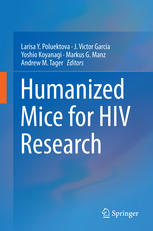

Most ebook files are in PDF format, so you can easily read them using various software such as Foxit Reader or directly on the Google Chrome browser.
Some ebook files are released by publishers in other formats such as .awz, .mobi, .epub, .fb2, etc. You may need to install specific software to read these formats on mobile/PC, such as Calibre.
Please read the tutorial at this link: https://ebookbell.com/faq
We offer FREE conversion to the popular formats you request; however, this may take some time. Therefore, right after payment, please email us, and we will try to provide the service as quickly as possible.
For some exceptional file formats or broken links (if any), please refrain from opening any disputes. Instead, email us first, and we will try to assist within a maximum of 6 hours.
EbookBell Team

5.0
70 reviewsOver the last several years the field of humanized mice has matured and developed into an essential component of translational research for HIV/AIDS. Humanized mice serve both as vehicles for discovery and as highly sophisticated platforms for biomedical research. In addition, humanized mice have demonstrated outstanding potential for the investigation of critical aspects of the infection and pathogenesis of the hepatitis and herpes viruses, as well as highly relevant microbial infections such as tuberculosis and malaria.
Humanized Mice for HIV Research provides a comprehensive presentation of the history, evolution, applications, and current state of the art of this unique animal model. An expansion of twelve review articles that were published in Humanized Mice by Springer in 2008 (Eds: Nomura T, Watanabe T, Habu S), this book expertly captures the outstanding progress that has been made in the development, improvement, implementation, and validation of humanized mouse models. The first two parts of this book cover the basics of human-to-mouse xenotransplantation biology, and provide critical information about human immune cell development and function based on individual models created from different immunodeficient strains of mice. The third and fourth parts investigate HIV-1 biology, including different routes of transmission, prevention, treatment, pathogenesis, and the development of adaptive immunity in humanized mice. The fifth part shows the broad applicability of humanized mice for therapeutic development, from long-acting antiretroviral combinations to genetic manipulations with human cells and cell-based approaches. The sixth part includes liver tissue engineering and the expansion of humanized mice for many other human cell-tropic pathogens.